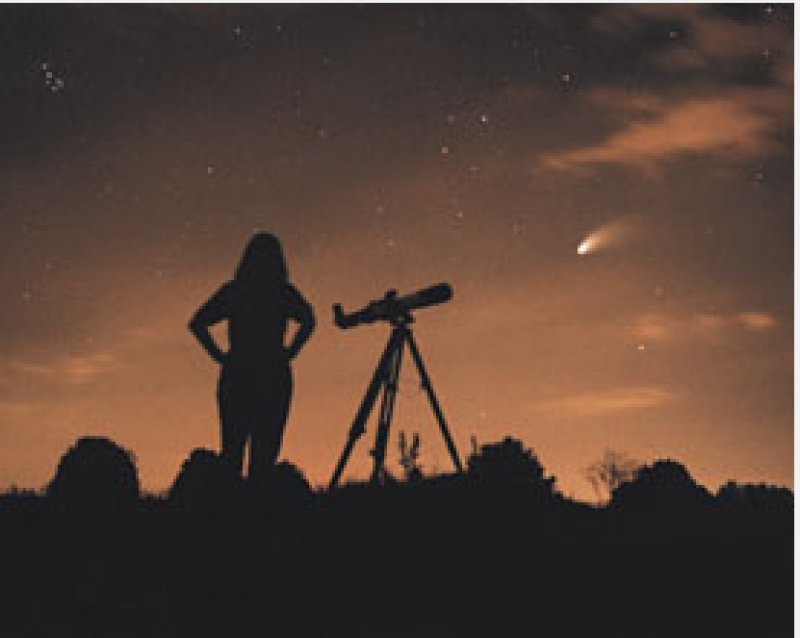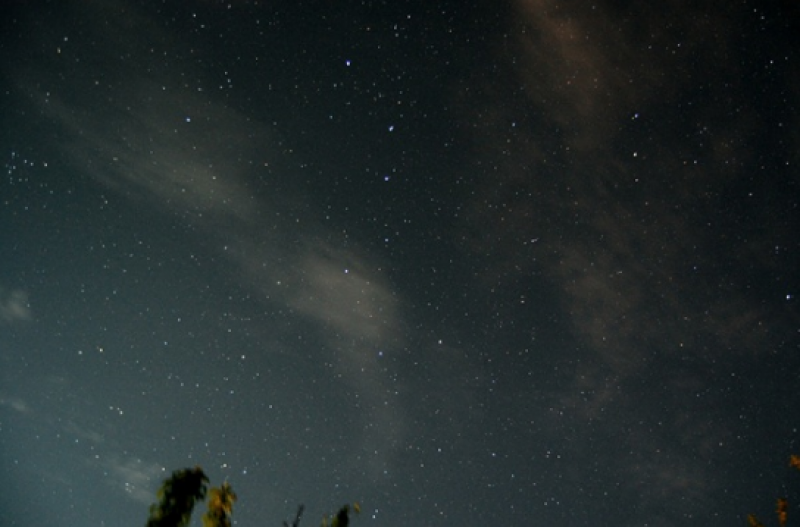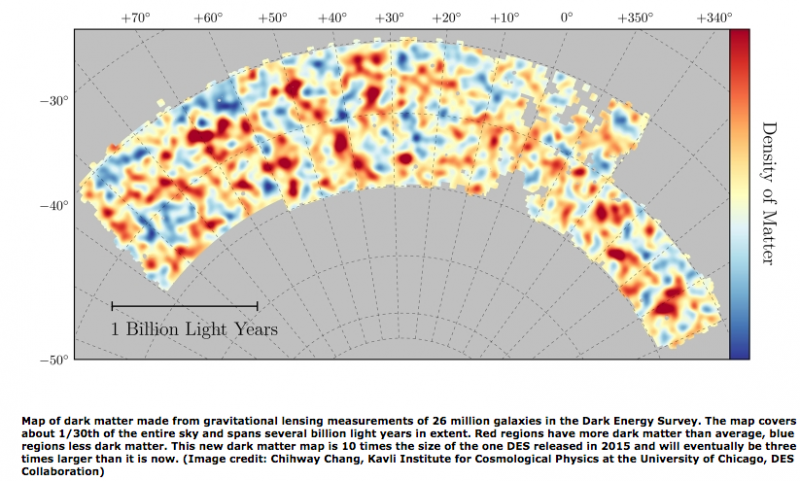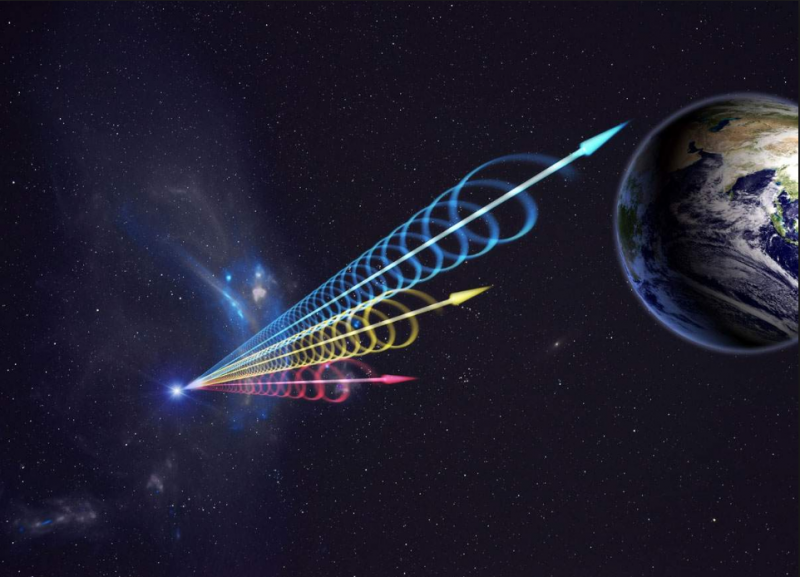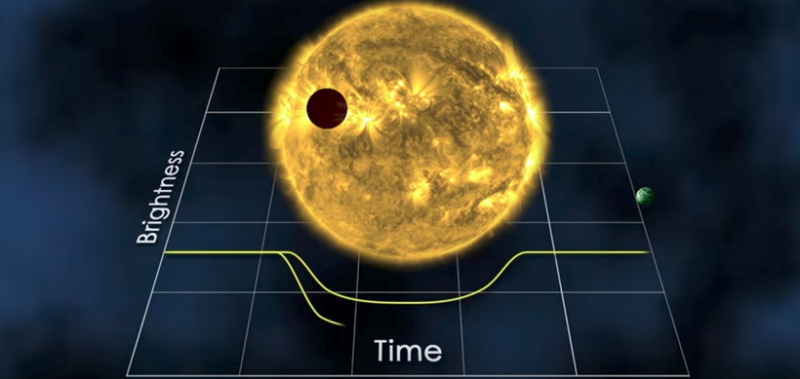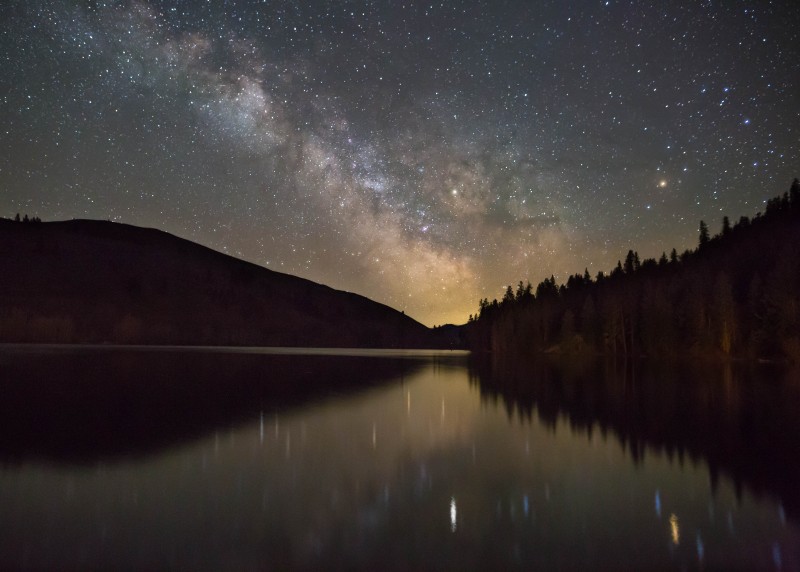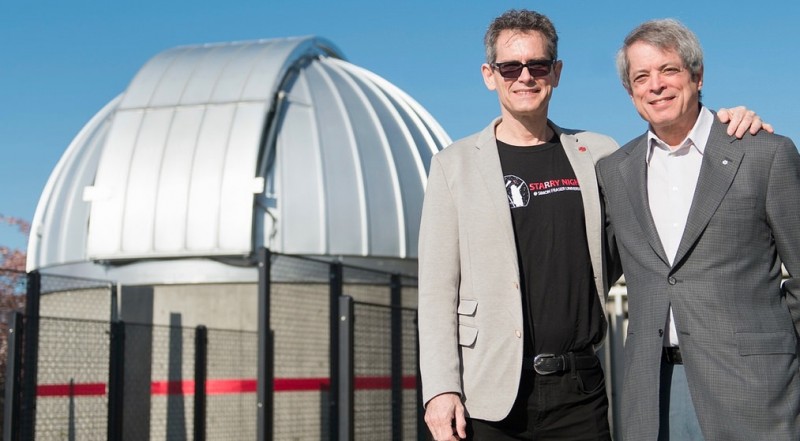Blog
Astronomy for Beginners: How to Get Started in Backyard Astronomy
Friday, September 15th 2017 11:20 PM
Did you know you can see a galaxy 2½ million light-years away with your unaided eyes? Craters on the Moon with binoculars? Countless wonders await you any clear night. The first step in astronomy for beginners is simply to look up and ask, "What's that?" Begin gazing at the stars from your backyard, and you'll be taking the first step toward a lifetime of cosmic exploration and enjoyment.
But what, exactly, comes next? Too many newcomers to astronomy get lost in dead ends and quit in frustration. Astronomy for beginners shouldn't be that way.
What advice would help beginners the most? A while ago, the Sky & Telescope editors got together to brainstorm this question about astronomy for beginners. Pooling thoughts from more than 100 years of collective experience answering the phones and mail, we came up with the following pointers to help newcomers past the most common pitfalls and onto the likeliest route to success.
Astronomy for Beginners: Learn the night sky...
Read More
Read More
SkyWatch: Week of 9/10/17
Tuesday, September 12th 2017 11:29 PM
Friday, September 8
Jupiter has been a conspicuous evening object for the past several months, but it’s nearing the end of its reign. The giant planet lies about 10° high in the west-southwest 45 minutes after sunset. Still, at magnitude –1.7, it shines brightly enough to appear prominent against the twilight glow. If you view Jupiter through binoculars this evening, you’ll also see 1st-magnitude Spica 3° to its lower left. The planet appears 12 times brighter than the star. A telescope easily shows Jupiter’s four bright moons, but the planet’s low altitude means you won’t see crisp details on its 32"-diameter disk.
Saturday, September 9
The constellations Ursa Major the Great Bear and Cassiopeia the Queen lie on opposite sides of the North Celestial Pole, so they appear to pivot around the North Star (Polaris) throughout the course of the night and the year. In late August and early September, these two constellations appear equally...
Read More
Read More
New Clues to Universe's Structure Revealed
Saturday, September 9th 2017 08:56 PM
Imagine planting a single seed and with great precision being able to predict the exact height of the tree that grows from it. Now imagine traveling to the future and snapping photographic proof that you were right.If you think of the seed as the early universe, and the tree as the universe the way it looks now, you have an idea of what the Dark Energy Survey (DES) collaboration has just done. DES scientists have just unveiled the most accurate measurement ever made of the present large scale structure of the universe.These measurements of the amount and "clumpiness" (or distribution) of dark matter in the present day cosmos were made with a precision that, for the first time, rivals that of inferences of the early universe by the European Space Agency's orbiting Planck observatory. The new DES result (the tree, in the above metaphor) is close to the forecasts made from the Planck measurements of the distant past (the seed), allowing scientists to understand more about the ways the uni...
Read More
Read More
Distant Galaxy Sends Out 15 High Energy Radio Bursts -- Can You Hear Me Now?
Saturday, September 9th 2017 12:00 AM
The Breakthrough Listen Program, an initiative to find signs of intelligent life in the universe, has detected 15 brief but powerful radio pulses emanating from a mysterious and repeating source - FRB 121102 - far across the universe.Fast radio bursts are brief, bright pulses of radio emission from distant but largely unknown sources, and FRB 121102 is the only one known to repeat. More than 150 high energy bursts have been observed coming from the object, which was identified last year as a dwarf galaxy about 3 billion light years from Earth.Possible explanations for the repeating bursts range from outbursts from rotating neutron stars with extremely strong magnetic fields (magnetars) to a more speculative idea -- They are directed energy sources, powerful laser bursts used by extraterrestrial civilizations to power spacecraft, akin to Breakthrough Starshot's plan to use powerful laser pulses to propel nano-spacecraft to our solar system's nearest star, Proxima Centauri."Bursts from t...
Read More
Read More
10 Women in Astronomy Everyone Should Know
Thursday, June 15th 2017 07:06 PM
There is an article buzzing around the Internet that asks: Where are all the women astronomers. Well, you may may not know their names, but they are there, changing the way we look at the Cosmos. In the NASA photo above Tracy Caldwell Dyson, a chemist and NASA astronaut, looks at Earth from the International Space Station.
Vera Cooper Rubin: Dark matter detective
In the early 1970s, Vera Rubin teamed up with astronomer Kent Ford and others to study the rotation of spiral galaxies, according to the Jewish Women's Archive. To their surprise, they found that the predicted angular motion didn’t match what they were seeing. In fact, galaxies were rotating so fast that predictions showed they should break apart if the only thing holding them together was the gravity from their visible stars. Rubin and her collaborators hypothesized that some invisible glue — an unseen mass — must be at work. The group’s groundbreaking work provided...
Read More
Read More
Successor to Hubble: Bigger, Better, Higher
Tuesday, June 13th 2017 10:31 PM
The Hubble Telescope has been a breathtaking resource for astronomers but it’s about to be replaced by a bigger, better, higher telescope called the Jame Webb Space Telescope. (Photo: NASA, Amber Staughn, NASA, TED Talk)
The Webb Telescope will have a mirror that is 6.5 meters. That’s 7 times larger than Hubble. It’s orbit will be 1 million miles out, about 4 times farther out than the moon. It won’t orbit the earth at that altitude, but will rather be in co-orbit with the Earth around the sun.
Lifesize model of Webb Telescope on display in Seattle in 2007
The Webb will see mostly in the infrared spectrum, but will be able to see some red. It will see heat, but it will also be able to see planets. But one of the main advantages of Webb will be its ability to see chemical compositions in atmospheres, such as water vapor, oxygen and other compounds.
Read More
Read More
Star Gaze with Methow Valley Astronomer Dave Ward June 28
Sunday, June 11th 2017 10:22 PM
He’s not exactly a household word, but Dave Ward know the sky. He’s been an amateur astronomer since an early age. He is strictly an amateur and proud of it and is completely self taught.
He gives evening presentations to other aspiring star gazers at Sun Mountain Lodge and Ash Meadows National Wildlife Refuge in Nevada. He also writes a column for the Methow Valley News, tagged “The Naked Eye.”
In addition to more modern equipment, Ward liked to show off his 130-year-old brass Clarkston, built in England and purchased by his grandfather.
The event is free and starts at 8:30. For information call 1-800-572-0493. Photo: Milky Way over Patterson Lake, Winthrop, WA, Dave Ward.
Read More
Read More
Wanna Go Pro? Better Learn Code!
Friday, June 9th 2017 04:24 AM
Astronomer Meredith Rawls was in an astronomy master's program at San Diego State University in 2008 when her professor threw a curveball. “We’re going to need to do some coding," he said to her class. "Do you know how to do that?”
Not really, the students said.
And so he taught them—at lunch, working around their regular class schedule. But what he meant by “coding” was Fortran, a language IBM developed in the 1950s. Later, working on her PhD at New Mexico State, Rawls decided her official training wasn’t going to cut it. She set out to learn a more modern language called Python, which she saw other astronomers switching to. “It's going to suck,” she remembers telling herself, “but I'm just going to do it.”
And so she started teaching herself, and signed up for a workshop called SciCoder. “I basically lost the better part of a year of standard research producti...
Read More
Read More
Physics Prof by Day; Amateur Astronomer by Night
Thursday, June 8th 2017 04:44 AM
Howard Trottier’s (left, above) day job concerns the teeny-tiniest stuff in the universe.
His night gig takes in the whole cosmos.
“From the subatomic to the big,” Trottier, a physics professor at Simon Fraser University, said. “They’re intricately linked, as it turns out.”
He is a theoretical subatomic physicist by training — research interests include lattice quantum chromodynamics and heavy-flavour physics — but his passion is the night sky.
Intrigued as a boy by the experiments carried out by his older brother, Lorne, (right, above) who built a crystal radio before Trottier was even born, he was always fascinated by science.
Lorne, 11 years Trottier’s senior, still has a huge influence. Co-founder of a Montreal tech company, Lorne donated $2.7 million of the $4.4-million cost — in effect, fronting the capital cost — of the two-year-old Trottier Observatory and Science Courtyard at SFU.
&ldquo...
Read More
Read More
The Cassini Division is visable.
Thursday, May 11th 2017 12:16 AM
Viewing Saturn: The Planet, Rings and Moons
Ask amateur telescope users what's the most beautiful thing in the sky, and lots of them will say Saturn. In fact many say their first sight of it was what turned them on to astronomy. Viewing Saturn in a good telescope often draws gasps from visitors, who after a lifetime of seeing cartoon ringed planets are awed by viewing the original.
But you can never see Saturn as well as you want! The planet is tiny as telescopic targets go; it's barely 21 arcseconds in diameter at its most favorable oppositions. Saturn's ring system is 2.25 times as wide as the ball — but that's still smaller than the width of Jupiter near opposition. And the disk itself shows only about 1/6 the area of Jupiter. Try to magnify it too much and it defies you by turning into a blurry mess. Viewing Saturn is indeed a jewel, exquisite but tiny.
However, with time, patience, and a top-quality 4-inch or larger telescope, you can tease out more of the plane...
Read More
Read More
